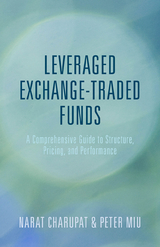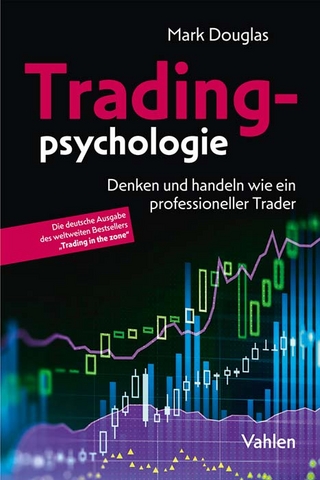Leveraged Exchange-Traded Funds
Palgrave Macmillan (Verlag)
978-1-137-47820-7 (ISBN)
This comprehensive guide to LETFs provides high-level practitioners and researchers with a detailed reference tool for navigating the market and making informed investment decisions. Written from a measured analytical perspective, Miu and Charupat use clear and concise explanations of all important aspects of LETFs, focusingon such key elements as structure, pricing, performance, regulations, taxation, and trading strategies. The first two chapters set the stage for the book by identifying exactly what LETFs are and how they are regulated. The following chapters then look to bridge theory with practice to dive deep into the mechanics, portfolio rebalancing techniques, and daily compounding effects that make investing in these funds so lucrative.
Narat Charupat is Professor of Finance at the DeGroote School of Business, McMaster University, USA. Prior to joining academia, he worked as a financial analyst for an investment bank and risk management software company, where he conducted research into the areas of financial innovation, security designs, annuity and insurance products, arbitrage relationships, commodity investments, and behavioral finance. He is the co-author of a textbook on strategic financial planning and has published extensively in the Journal of Banking and Finance, Journal of Economic Theory, Journal of Financial and Quantitative Analysis, and Journal of Risk and Insurance. Dr. Peter Miu is Professor of Finance at the DeGroote School of Business, McMaster University. His research is primarily in the areas of credit risk modeling, exchange-traded funds, and investments. He has served as a consultant for major financial institutions in North America, where he worked on such issues as validations of credit risk measures, regulatory capital requirements, risk rating and stress testing modeling. He is the co-author of two books on Basel II and III that provide both the theory and practical how-to knowledge risk management professionals need to implement the concepts of these regulatory requirements in their institutions. He has also published extensively in journals on issues related to leveraged exchange-traded funds. He sits on the editorial board of the Journal of Risk Model Validation and currently holds the Michael Lee-Chin & Family Professorship in Strategic Business Studies at the DeGroote School of Business.
List of Figures
List of Tables
1.Introduction
2.Regulations and Taxations of Leveraged ETFs
3.Mechanics of Leveraged Exchange-Traded Funds
4.Return Dynamics and Compounding Effects
5.Pricing Efficiency
6.Performance and tracking errors of LETF
7.Trading Strategies
8.Options on LETFs
Bibliography
An essential resource for those wanting to understand the intricacies of Leveraged Exchange Traded Funds, Mssrs. Charupat and Miu offer an in-depth examination of the operations of, the mathematics behind, and the general utility of, LETFs. This book is a must-read for any industry professional who strives to comprehend exactly what makes LETFs function, and wants an excellent illustration of all of the nuances of this very effective investing tool. Highly recommended for investors, advisors, compliance professionals and regulators alike.' —Jaime Purvis, Executive Vice-President, Horizons ETFs
| Zusatzinfo | X, 176 p. |
|---|---|
| Verlagsort | Basingstoke |
| Sprache | englisch |
| Maße | 155 x 235 mm |
| Themenwelt | Naturwissenschaften |
| Wirtschaft ► Betriebswirtschaft / Management ► Finanzierung | |
| Betriebswirtschaft / Management ► Spezielle Betriebswirtschaftslehre ► Bankbetriebslehre | |
| ISBN-10 | 1-137-47820-9 / 1137478209 |
| ISBN-13 | 978-1-137-47820-7 / 9781137478207 |
| Zustand | Neuware |
| Haben Sie eine Frage zum Produkt? |
aus dem Bereich




